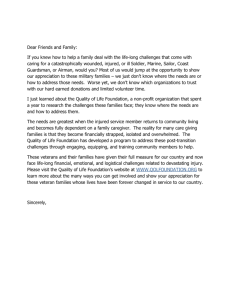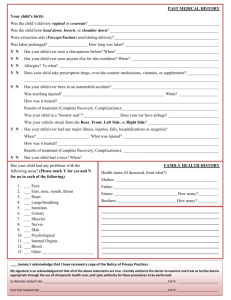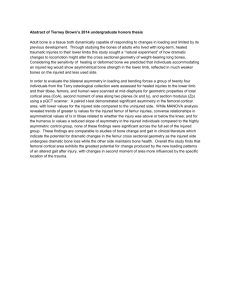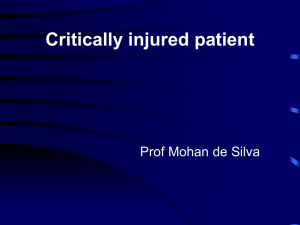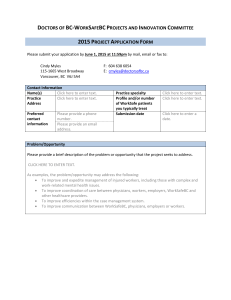Instructions for Employees and Students on Safe Use of Power Tools
advertisement
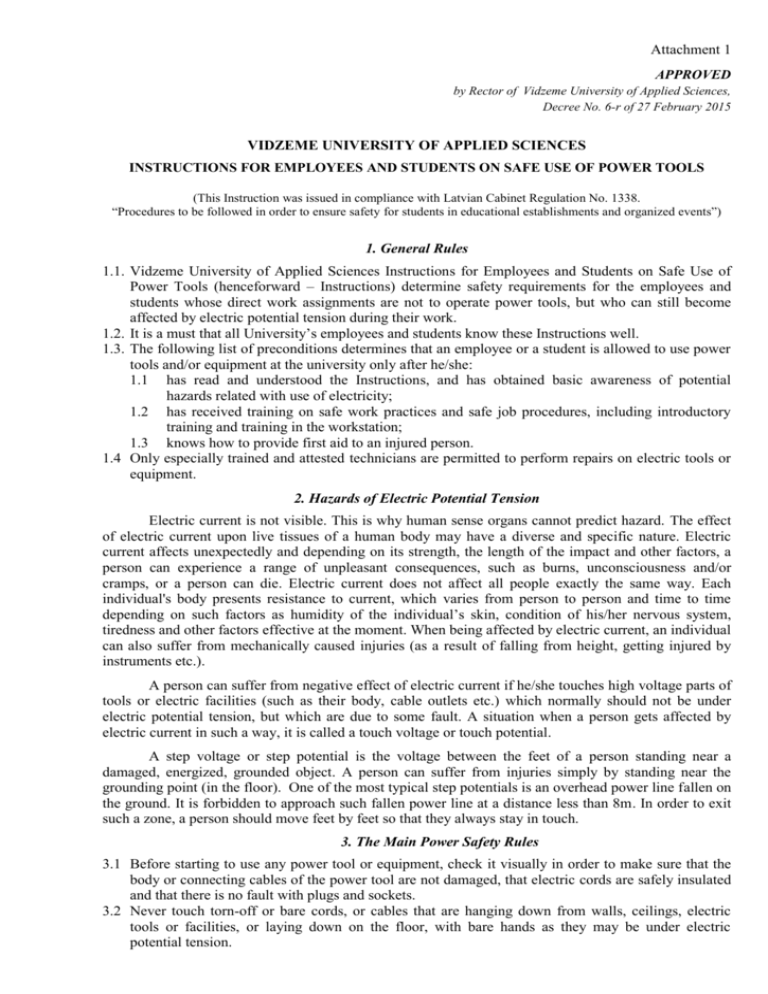
Attachment 1 APPROVED by Rector of Vidzeme University of Applied Sciences, Decree No. 6-r of 27 February 2015 VIDZEME UNIVERSITY OF APPLIED SCIENCES INSTRUCTIONS FOR EMPLOYEES AND STUDENTS ON SAFE USE OF POWER TOOLS (This Instruction was issued in compliance with Latvian Cabinet Regulation No. 1338. “Procedures to be followed in order to ensure safety for students in educational establishments and organized events”) 1. General Rules 1.1. Vidzeme University of Applied Sciences Instructions for Employees and Students on Safe Use of Power Tools (henceforward – Instructions) determine safety requirements for the employees and students whose direct work assignments are not to operate power tools, but who can still become affected by electric potential tension during their work. 1.2. It is a must that all University’s employees and students know these Instructions well. 1.3. The following list of preconditions determines that an employee or a student is allowed to use power tools and/or equipment at the university only after he/she: 1.1 has read and understood the Instructions, and has obtained basic awareness of potential hazards related with use of electricity; 1.2 has received training on safe work practices and safe job procedures, including introductory training and training in the workstation; 1.3 knows how to provide first aid to an injured person. 1.4 Only especially trained and attested technicians are permitted to perform repairs on electric tools or equipment. 2. Hazards of Electric Potential Tension Electric current is not visible. This is why human sense organs cannot predict hazard. The effect of electric current upon live tissues of a human body may have a diverse and specific nature. Electric current affects unexpectedly and depending on its strength, the length of the impact and other factors, a person can experience a range of unpleasant consequences, such as burns, unconsciousness and/or cramps, or a person can die. Electric current does not affect all people exactly the same way. Each individual's body presents resistance to current, which varies from person to person and time to time depending on such factors as humidity of the individual’s skin, condition of his/her nervous system, tiredness and other factors effective at the moment. When being affected by electric current, an individual can also suffer from mechanically caused injuries (as a result of falling from height, getting injured by instruments etc.). A person can suffer from negative effect of electric current if he/she touches high voltage parts of tools or electric facilities (such as their body, cable outlets etc.) which normally should not be under electric potential tension, but which are due to some fault. A situation when a person gets affected by electric current in such a way, it is called a touch voltage or touch potential. A step voltage or step potential is the voltage between the feet of a person standing near a damaged, energized, grounded object. A person can suffer from injuries simply by standing near the grounding point (in the floor). One of the most typical step potentials is an overhead power line fallen on the ground. It is forbidden to approach such fallen power line at a distance less than 8m. In order to exit such a zone, a person should move feet by feet so that they always stay in touch. 3. The Main Power Safety Rules 3.1 Before starting to use any power tool or equipment, check it visually in order to make sure that the body or connecting cables of the power tool are not damaged, that electric cords are safely insulated and that there is no fault with plugs and sockets. 3.2 Never touch torn-off or bare cords, or cables that are hanging down from walls, ceilings, electric tools or facilities, or laying down on the floor, with bare hands as they may be under electric potential tension. 3.3 Never touch bodies of power tools or equipment while you are also touching radiators of central heating, water and sewage pipes or other grounded objects. 3.4 Never wipe dust from electric tools and equipment with humid cloth while they are connected to the power source. 3.5 Never try disconnecting an electric tool or equipment form electricity by pulling on the plug. Never try disconnecting an electric tool or equipment form electricity by pulling on the cord as it can cause damage to the plug or the socket which subsequently could result in a dead short. 3.6 It is forbidden to use power tools with faulty insulation, damaged electric cords, electric switches, plugs and sockets, or power equipment with damaged bodies etc. 3.7 It is forbidden to utilize faulty power tools or equipment (unusual noise, sparkling, increased heating up and smoke are some signs of faults). 3.8 Upon completion of work, power tools and equipment must be disconnected from the source of electricity except the stand-by light that shall be left on according to specific instructions. 3.9 All faults of power tools and equipment must be reported immediately to the supervisor and the technicians that service them. If there is a potential that the fault can cause hazard to the health and life of people, the location of the faulty tool or equipment shall be closed off (the room shall be locked, the location shall be marked around with restrictive tapes and warning signs shall be placed around it etc.), cordoned in order to secure that third persons cannot access it until especially trained hazard prevention experts arrive. 4. Providing First Aid to an Injured 4.1. If an injury has been caused by electric current, first step is to restrict the person from the source of electricity after which first aid shall be provided and professional medical help ensured (call emergency brigade or bring the injured to a medical facility). 4.2. The accident shall be reported to the supervisor or the University’s safety expert immediately. 4.3. One should take extreme caution when releasing the injured person from the impact of the electric current because there is a risk that the rescuer can also get injured (the rescuer can become in the situation of a touch voltage or step voltage). Safety measures shall be taken in order to secure that the injured person does not suffer mechanic injury (for instance, by falling from a height and alike) while he/she is being released from the impact of electric current. Releasing an injured person from the impact of electric current may be accomplished in the following ways: 4.3.1. by switching off the electric potential tension (each employee shall know how to switch off the electric potential tension in his/her workplace); 4.3.2. by cutting electric cords supplying current to the place where the accident has happened (instruments with insulated handles shall be used); 4.3.3. by moving electric cords off from the injured person using an insulated object; 4.3.4. by pulling the affected person off holding him/her by his/her clothing if the clothes are dry; 4.3.5. by throwing a rope or an insulated wire around the person’s legs or body or by wrapping an insulating material around the rescuer’s hand and pulling the affected person off. 4.4. Depending on the specific circumstances, other approaches can also be used in order to release a person from the impact of electric current. 4.5. If the injured person is unconscious, first aid shall be provided: 4.5.1. the injured must be turned onto his/her back, placed on a steady ground and his/her respiratory tract shall be released. Bend the injured person’s head back, move the jaw open and check the injured person’s breathing by watching his/her chest movements, listening to the sound of his/her breath or feel his/her breath’s airstream; 4.5.2. if the injured is breathing, he/she shall be laid on his/her side and stabilized there, and then watched while waiting for an emergency brigade to arrive; 4.5.3. if the injured does not breathe, exhale twice into his/her mouth and check if there is a pulse on his/her carotid artery. If there is a pulse, continue performing artificial respiration approximately 12 times a minute (once in 5 seconds). Check the injured person’s pulse every minute; 4.5.4. if the injured person has no pulse, perform cardiopulmonary resuscitation with periodic artificial respiration in the following manner: 4.5.4.1. press 15 times on the injured person’s chest (gladiolus) repeatedly for 80 to 100 times a minute (the total length of such indirectly performed heart massage should last for 9-11 seconds) succeeded by two forced exhales into the injured person’s mouth (lasting no more than 7 seconds), 4.5.5. 4.5.6. 4.5.7. 4.5.8. 4.5.9. 4.5.4.2. after each 4 artificial respiration and cardiopulmonary resuscitation cycles (the relation between artificial respiration and cardiopulmonary resuscitation times shall be 2 to 15. If reanimation is performed by two rescuers, one of them shall perform artificial respiration, the other – cardiopulmonary resuscitation, and the relationship between artificial respiration and cardiopulmonary resuscitation times should be 1:5, the pulse shall be checked after each 10 cycles) pulse shall be checked on the injured person’s carotid artery (the length of the pulse check shall be 5 seconds); if there is no pulse, continue with artificial respiration and cardiopulmonary resuscitation; if the pulse is renewed, artificial respiration shall be continued; if breathing is renewed, the injured shall be placed on his/her side and stabilized there; if the injured comes to conscience, provide care and watch his/her condition (consciousness, breathing, pulse). The injured shall not move or return to work without a permission of a physician because there is a risk that his/her condition may suddenly worsen; reanimation measures shall be continued until: 4.5.9.1. the injured person’s breathing is renewed, 4.5.9.2. reanimation is overtaken by professionals, 4.5.9.3. the rescuer is out of strength.
